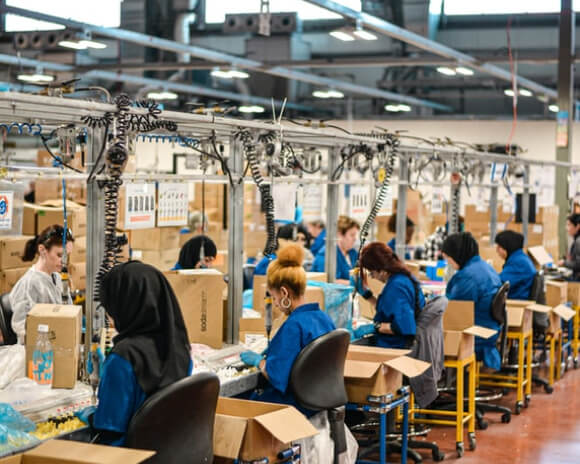The companies that embrace synchronisation will be best placed to take full advantage and will thrive and not just survive.
We’re now in 2020. This is the decade when technology is going to transform how supply chains are run and managed, and the lives of people working in them. The supply chain world is going to become connected, digitalized and autonomous.
Surprisingly many companies still suffer from poor visibility and understanding of the flow of product and information across their supply chains. The quality and reliability of information has a major bearing on the performance and costs of the supply chain. Yet it remains a low priority for supply chain managers and traditional technology is not delivering.
Supply chain costs typically account for 60-80% of a business’s cost base and new technology promises significant cost savings. The businesses that thrive (and survive) will be those that use new technology to keep customers satisfied, competitors at bay and are seen to contribute to sustainability.
To develop the right technology strategy and architect the best solution, fundamental supply chain management principles must not be forgotten and new technology should be reviewed in line with the basic concepts of supply chain management:
- Balancing supply with demand
- Managing execution
- Optimising product flow
Balancing supply with demand
Managing the capability, capacity and sourcing strategy of the supply chain network and aligning it with the business goals is key. The difficult part is knowing how certain the demand forecasts are, how much to buffer the capacities for this uncertainty and how much to buffer the resource levels for demand volatility. Deeper understanding of the demand profiles and patterns increases certainty about demand and reduces the need for a buffer, this is why the quality of supply chain information is critical.
Technology needs to provide network modelling capability to optimise resource levels given demand profiles, market forecast accuracies and supply chain capabilities and executional certainties. The buffers in the system should be visible, costed and the causes targeted for improvement.
Managing execution
To effectively manage execution, we need to consider the activities being undertaken within the operations sites and the movement of product between the supply chain nodes. Detailed, real-time visibility of product movement and performance between operations sites is essential so that action can be quickly taken to expedited and resolve issues or re-schedule activities at receiving sites. To ensure efficiency is maintained.
The supply chain technology strategy must review the opportunities to use digitalization to provide greater visibility, scope, detail and timeliness of information to provide this visibility and rapid rescheduling capability.
The cause for the need for expediting and re-scheduling need to be investigated and removed and processes protected with buffers until this is achieved. Understanding information and product flow is key to getting this right.
Optimising Product Flow
In our experience, many people don’t trust the information flowing across its supply chain, make arbitrary decisions and change their minds. This leads to higher costs and poor customer experience.
Inadequate supply chain process synchronization is the root cause of these issues. If information is constantly changing, then trust and the value of the information diminishes. Receiving organizations buffer for this lack of certainty, lead-times lengthen and the chances of manual intervention increase. It is a world of crisis and fire-fighting and unnecessary cost and waste.
The solution is to use the visibility of your supply chain network to synchronize the processes and align information exchange with product flow.
At SupplyVue, we focus on supply chain information flow management and synchronization. We believe that this is an untapped area that needs real focus and attention. When you’re looking at your supply chain consider three key questions:
- How well do you understand the demand profiles and do you have in-depth visibility of the level and causes of information and product flow variability?
- Do you have demand propagation rules that are driven by customer service requirements yet support the underlying supply chain operations?
- Are you still spending time on repetitious ‘non-value add’ tasks that could be managed via process automation?
Synchronization will deliver the quick win benefits of reducing inventory, manual intervention and expediting costs and will also set the supply chain on course to take full advantage of significant efficiency gains that digitalization and process automation are promising.
The companies that embrace new technology and move towards synchronisation will thrive in the 2020s, so take a fresh look at your supply chain development plans.
Then ask yourself if you’re really moving towards a synchronised and sustainable supply chain?



